
However, while clearly a unique idea to extend the possibilities of cooling, the execution is a little flawed. We're assured our product is mass production, it's just missing a BIOS (hence no shots of that here), but the security of which the two screws adhere it into place is severely lacking.
The "Flame Freezer" wing, as DFI dubs it, attempts to flap about as it's loosely held in place, making a less than optimal heat transfer from the fins it rubs against. In addition - it maybe all well and good screwing it in on a test bench, but when you've got the motherboard in a case, to get both the wing in place and those two screws in, I'd imagine it's not an easy operation.
It's the cheapest, simplest approach, but lacks in ease of use and likely efficiency of thermal transfer. Not to mention the fact that the screws have to bite into aluminium: a soft metal that loses thread easily.
DFI provides the usual six DDR3 memory slots and kits the board in quality Nippon Chemicon solid state aluminium capped capacitors. The SATA ports, of which there are eight, are well placed at the edge of the board, and it also gets onboard, backlit power and reset buttons and even though it seems we're missing the Clear CMOS - pressing both together will achieve that in an operation DFI called "EZ Clear". In addition, there is still the two digit LED readout, which, while always useful is getting a little dated now since other companies are trying to improve on this recently.
We've no idea why DFI still feels the need to include a floppy port and the USB pin-outs might be difficult to use since they are all in line with the lower PCI-Express x16 slot.
DFI's "Bernstein Audio" makes a comeback with a slightly improved Realtek ALC889 chipset that supports content protection for HDCP encrypted audio (should the software support it), as well as using surface mount tantalum capacitors that offer 10x higher volumetric capacity for their size and an equally appreciably lower ESR than standard aluminium and solid capped types. These aren't that unusual for electronics devices - they are quite commonly found in size or temperature sensitive environments, but also cost more so are used sparingly.
Finally, the BIOS. We've not got much information on this yet but we do know it features DFI's latest "Genie BIOS Extreme Edition" (all it needs is "super special, lightening fast and ultra reliable/durable" and we can play marketing buzzword bingo) that claims over one hundred BIOS options for overclockers and for the sake of my sanity having to review it, I hope it comes with a comprehensive manual or they are well labelled. Beginners fear not though, because the LANParty Auto Boost System is there to satisfy the needs of tweaking newbies.
It even allows sharing of BIOS settings and DFI is clever to further use its strong, very loyal overclocking community that likes to just be given a load of options and told to get on with it. They are the kind of kids that got the box of Lego Technic or Mechano and threw out the manual. By allowing "global [overclocking] veterens" to decipher what works best it not only generates more interest in a product but also means 10/20/50/200 people are tuning your board rather than just a BIOS team (... or Oskar).
Has this perked your interest in DFI's X58 UT? Or are you waiting for a firm price, overclocking results and a comparative against the Asus Rampage II Extreme, Foxconn Renaissance and EVGA's X58? The enthusiast arena is heating up like a cook-off with the Devil, and who will win in the X58 war (or will no one because they will all be too expensive)? Drop us your thoughts, in the forums.
The "Flame Freezer" wing, as DFI dubs it, attempts to flap about as it's loosely held in place, making a less than optimal heat transfer from the fins it rubs against. In addition - it maybe all well and good screwing it in on a test bench, but when you've got the motherboard in a case, to get both the wing in place and those two screws in, I'd imagine it's not an easy operation.
It's the cheapest, simplest approach, but lacks in ease of use and likely efficiency of thermal transfer. Not to mention the fact that the screws have to bite into aluminium: a soft metal that loses thread easily.
DFI provides the usual six DDR3 memory slots and kits the board in quality Nippon Chemicon solid state aluminium capped capacitors. The SATA ports, of which there are eight, are well placed at the edge of the board, and it also gets onboard, backlit power and reset buttons and even though it seems we're missing the Clear CMOS - pressing both together will achieve that in an operation DFI called "EZ Clear". In addition, there is still the two digit LED readout, which, while always useful is getting a little dated now since other companies are trying to improve on this recently.
We've no idea why DFI still feels the need to include a floppy port and the USB pin-outs might be difficult to use since they are all in line with the lower PCI-Express x16 slot.
DFI's "Bernstein Audio" makes a comeback with a slightly improved Realtek ALC889 chipset that supports content protection for HDCP encrypted audio (should the software support it), as well as using surface mount tantalum capacitors that offer 10x higher volumetric capacity for their size and an equally appreciably lower ESR than standard aluminium and solid capped types. These aren't that unusual for electronics devices - they are quite commonly found in size or temperature sensitive environments, but also cost more so are used sparingly.
Finally, the BIOS. We've not got much information on this yet but we do know it features DFI's latest "Genie BIOS Extreme Edition" (all it needs is "super special, lightening fast and ultra reliable/durable" and we can play marketing buzzword bingo) that claims over one hundred BIOS options for overclockers and for the sake of my sanity having to review it, I hope it comes with a comprehensive manual or they are well labelled. Beginners fear not though, because the LANParty Auto Boost System is there to satisfy the needs of tweaking newbies.
It even allows sharing of BIOS settings and DFI is clever to further use its strong, very loyal overclocking community that likes to just be given a load of options and told to get on with it. They are the kind of kids that got the box of Lego Technic or Mechano and threw out the manual. By allowing "global [overclocking] veterens" to decipher what works best it not only generates more interest in a product but also means 10/20/50/200 people are tuning your board rather than just a BIOS team (... or Oskar).
Has this perked your interest in DFI's X58 UT? Or are you waiting for a firm price, overclocking results and a comparative against the Asus Rampage II Extreme, Foxconn Renaissance and EVGA's X58? The enthusiast arena is heating up like a cook-off with the Devil, and who will win in the X58 war (or will no one because they will all be too expensive)? Drop us your thoughts, in the forums.

MSI MPG Velox 100R Chassis Review
October 14 2021 | 15:04

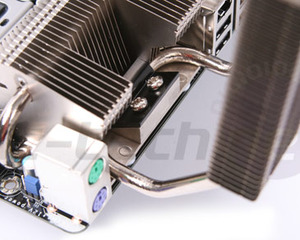
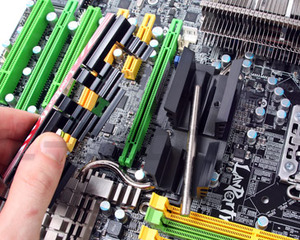
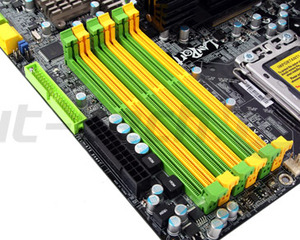
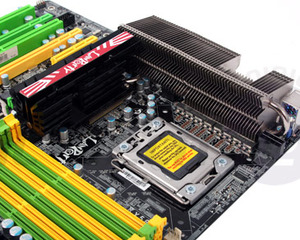
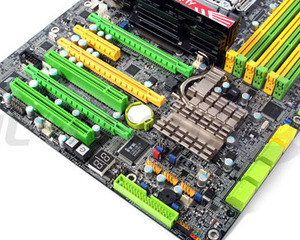
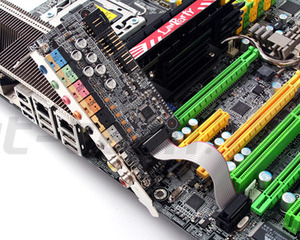







Want to comment? Please log in.